Governmental Functions in Establishing Alternative Marine Fuel Supply Chains in Shipping Decarbonization Governance
Abstract
1. Introduction
2. Materials and Methods
2.1. Materials
2.1.1. Adaptability of AMFs
- (1)
- GHG reduction potential
- (2)
- Costs
- (3)
- Safety
- (4)
- Availability
2.1.2. AMF Supply Chains
2.1.3. The MBMs Relating to Shipping Decarbonization
2.2. Methods
2.2.1. Questionnaire Investigation
2.2.2. Application of the Theory of Economics to the Relationship Between Government and Market and the Theory in Public Administration on Administrative Guidance
3. Results
4. Discussion
4.1. Vital Role of AMF Supply Chains in Shipping Decarbonization
4.2. Governmental Functions in Establishing AMF Supply Chains
4.2.1. Two Main Categories of Governmental Measures
- (1)
- Categories of measures and their respective meaning.
- (2)
- Differences in functions and legal consequences between CCMs and MBMs.
- (3)
- Combination of CCMs and MBMs.
4.2.2. Necessity of Combining Governmental Intervention with Market Mechanisms in Establishing AMF Supply Chains
- (1)
- Vital governmental functions to rectify the market disadvantages.
- (2)
- Utilization of respective advantages of CCMs and MBMs
4.3. Main Governmental Measures to Be Taken When Establishing AMF Supply Chains
4.3.1. Timely Developing Strategic Plans and Policies for Establishing AMF Supply Chains
- (1)
- The plan or policy needs to be systematic, objective, transparent, and enforceable regarding the features of AMF supply chains.
- (2)
- The plan or policy needs to take a progressive development approach.
- (3)
- The plan or policy needs to actively respond to the IMO strategy goals.
4.3.2. Appropriately Implementing Necessary Economic Incentive Measures to Establish AMF Supply Chains
- (1)
- The rationale of implementing economic incentive measures.
- (2)
- The specific means of economic incentive measures
4.3.3. Proactively Providing Administrative Guidance for Establishing AMF Supply Chains
4.3.4. Actively Enhancing International Cooperation for Establishing AMF Supply Chains
4.3.5. Other Alternative MBMs in Establishing AMF Supply Chains
5. Conclusions and Limitations
Author Contributions
Funding
Institutional Review Board Statement
Informed Consent Statement
Data Availability Statement
Conflicts of Interest
References
- Jasmi, M.F.A.; Fernando, Y. Drivers of maritime green supply chain management. Sustain. Cities Soc. 2018, 43, 366–383. [Google Scholar] [CrossRef]
- Traut, M.; Larkin, A.; Anderson, K.; McGlade, C.; Sharmina, M.; Smith, T. CO2 abatement goals for international shipping. Clim. Policy 2018, 18, 1066–1075. [Google Scholar] [CrossRef]
- Li, W.; Hu, Z. Pathways in the governance of shipping decarbonization from perspective of balancing the conflicting Interests. Front. Mar. Sci. 2024, 11, 1479528. [Google Scholar] [CrossRef]
- IMO. Resolution MEPC.377(80) on 2023 IMO Strategy on Reduction of GHG Emission from Ships. Available online: https://wwwcdn.imo.org/localresources/en/MediaCentre/PressBriefings/Documents/Resolution%20MEPC.377(80).pdf (accessed on 10 December 2024).
- CCS. Outlook for Low Carbon Development of Shipping 2023. Available online: https://www.ccs.org.cn/ccswz/articleDetail?id=202312081257422748&columnId=201900006000000014 (accessed on 15 December 2024).
- Serra, P.; Fancello, G. Towards the IMO’s GHG goals: A critical overview of the perspectives and challenges of the main options for decarbonizing international shipping. Sustainability 2020, 12, 3220. [Google Scholar] [CrossRef]
- UNCTAD. Review of Maritime Transport. 2023. Available online: https://www.unctad.org/publication/review-maritime-transport-2023 (accessed on 15 December 2024).
- Al-Enazi, A.; Okonkwo, E.C.; Bicer, Y.; Al-Ansari, T. A review of cleaner alternative fuels for maritime transportation. Energy Rep. 2021, 7, 1962–1985. [Google Scholar] [CrossRef]
- ITF. Decarbonising maritime transport: Pathways to zero-carbon shipping by 2035. In International Transport Forum Policy Papers; OECD Publishing: Paris, France, 2018. [Google Scholar] [CrossRef]
- Wang, Y.; Wright, L.A. A comparative review of alternative fuels for the maritime sector: Economic, technology, and policy challenges for clean energy implementation. World 2021, 2, 456–481. [Google Scholar] [CrossRef]
- Santos, V.A.; Silva, P.P.; Serrano, L.M.V. The maritime sector and its problematic decarbonization: A systematic review of the contribution of alternative fuels. Energies 2022, 15, 3571. [Google Scholar] [CrossRef]
- Wang, Q.; Zhang, H.; Huang, J.; Zhang, P. The use of alternative fuels for maritime decarbonization: Special marine environmental risks and solutions from an international law perspective. Front. Mar. Sci. 2023, 9, 1082453. [Google Scholar] [CrossRef]
- Arcos, J.M.M.; Santos, D.M.F. The hydrogen color spectrum: Techno-economic analysis of the available technologies for hydrogen production. Gases 2023, 3, 25–46. [Google Scholar] [CrossRef]
- Ampah, J.D.; Yusuf, A.A.; Afrane, S.; Jin, C.; Liu, H. Reviewing two decades of cleaner alternative marine fuels: Towards IMO’s decarbonization of the maritime transport sector. J. Clean. Prod. 2021, 320, 128871. [Google Scholar] [CrossRef]
- Longspur Research. Methanol and Shipping. Available online: https://www.methanol.org/wp-content/uploads/2022/01/Methanol-and-Shipping-Longspur-Research-25-Jan-2022.pdf (accessed on 19 November 2024).
- Cheliotis, M.; Boulougouris, E.; Trivyza, N.L.; Theotokatos, G.; Livanos, G.; Mantalos, G.; Stubos, A.; Stamatakis, E.; Venetsanos, A. Review on the safe use of ammonia fuel cells in the maritime industry. Energies 2021, 14, 3023. [Google Scholar] [CrossRef]
- Huang, Y.; Nie, Z.; Zhang, L.; Liu, X.; Feng, J.; Yin, Y.; Wang, H.; Tian, G.; Li, J.; Duan, F. Ammonia fuel: A pathway for carbon-neutral of the transportation sector. Chain 2024, 1, 113–137. [Google Scholar] [CrossRef]
- Sun, D. Can ammonia become the fuel of the future? Ship Economy and Trade? Ship Eco Trade 2021, 9, 6–11. [Google Scholar]
- Christodoulou, A.; Cullinane, K. Potential alternative fuel pathways for compliance with the ‘FuelEU Maritime Initiative’. Transp. Res. Part D 2022, 112, 103492. [Google Scholar] [CrossRef]
- Andersson, K.; Brynolf, S.; Hansson, J.; Grahn, M. Criteria and decision support for a sustainable choice of alternative marine fuels. Sustainability 2020, 12, 3623. [Google Scholar] [CrossRef]
- ETIP Bioenergy. Use of Biofuels in Shipping. 2020. Available online: https://www.etipbioenergy.eu/?option=com_content&view=article&id=294 (accessed on 8 December 2024).
- IEA. The Future of Hydrogen. 2019. Available online: https://www.iea.org/reports/the-future-of-hydrogen (accessed on 10 December 2024).
- Tullo, A. Is Ammonia the Fuel of the Future? Chemical & Engineering News, 8 March 2021; Volume 99. Available online: https://cen.acs.org/business/petrochemicals/ammonia-fuel-future/99/i8 (accessed on 12 December 2024).
- Brauer, H.B.; Khan, J. Diffusion of biogas for freight transport in Sweden: A user perspective. J. Clean. Prod. 2021, 312, 127738. [Google Scholar] [CrossRef]
- Lindstad, E.; Eskeland, G.S.; Rialland, A.; Valland, A. Decarbonizing maritime transport: The importance of engine technology and regulations for LNG to serve as a transition fuel. Sustainability 2020, 12, 8793. [Google Scholar] [CrossRef]
- Balci, G.; Phan, T.T.N.; Ebru Surucu-Balci, E.; Iris, Ç. A roadmap to alternative fuels for decarbonising shipping: The case of green ammonia. Res. Transp. Bus. Manag. 2024, 53, 101100. [Google Scholar] [CrossRef]
- McKinlay, C.J.; Turnock, S.R.; Hudson, D.A. Route to zero emission shipping: Hydrogen, ammonia or methanol? Int. J. Hydrogen Energy 2021, 46, 28282–28297. [Google Scholar] [CrossRef]
- Hansson, J.; Brynolf, S.; Fridell, E.; Lehtveer, M. The potential role of ammonia as marine fuel-based on energy systems modeling and multi-criteria decision analysis. Sustainability 2020, 12, 3265. [Google Scholar] [CrossRef]
- Al-Enazi, A.; Bicer, Y.; Okonkwo, E.C.; Al-Ansari, T. Evaluating the utilisation of clean fuels in maritime applications: A techno-economic supply chain optimization. Fuel 2022, 322, 24195. [Google Scholar] [CrossRef]
- Kim, K.; Roh, G.; Kim, W.; Chun, K. A preliminary study on an alternative ship propulsion system fueled by ammonia: Environmental and economic assessments. J. Mar. Sci. Eng. 2020, 8, 183. [Google Scholar] [CrossRef]
- Jang, H.; Jeong, B.; Zhou, P.; Ha, S.; Nam, D. Demystifying the lifecycle environmental benefits and harms of LNG as marine fuel. Appl. Energy 2021, 292, 116869. [Google Scholar] [CrossRef]
- Yadav, P.; Athanassiadis, D.; Yacout, D.M.M.; Tysklind, M.; Upadhyayula, V.K.K. Environmental impact and environmental cost assessment of methanol production from wood biomass. Environ. Pollut. 2020, 265, 114990. [Google Scholar] [CrossRef] [PubMed]
- Khan, M.Z.A.; Khan, H.A.; Ravi, S.S.; Turner, J.W.G.; Aziz, M. Potential of clean liquid fuels in decarbonizing transportation—An overlooked net-zero pathway? Renew. Sustain. Energy Rev. 2023, 183, 113483. [Google Scholar] [CrossRef]
- OECD. Charting a Course to Net Aero: The Crucial Role of Shipbuilding in Greening the Maritime Sector. 2023. Available online: https://www.oecd.org/en/blogs/2023/12/charting-a-course-to-net-zero-the-crucial-role-of-shipbuilding-in-greening-the-maritime-sector.html (accessed on 3 December 2024).
- Beamon, B.M. Supply chain design and analysis: Models and methods. Int. J. Prod. Econ. 1998, 55, 281–294. [Google Scholar] [CrossRef]
- Mäkitie, T.; Steen, M.; Saether, E.A.; Bjørgum, Ø.; Poulsen, R.T. Norwegian ship-owners’ adoption of alternative fuels. Energy Policy 2022, 163, 112869. [Google Scholar] [CrossRef]
- DNV. Maritime Forecast to 2050. 2022. Available online: https://www.dnv.com/publications/maritime-forecast-to-2050-2022-edition-235251/ (accessed on 1 November 2024).
- Krantz, R.; Søgaard, K.; Smith, T. The Scale of Investment Needed to Decarbonize International Shipping. 2020. Available online: https://www.globalmaritimeforum.org/content/2020/01/Getting-toZero-Coalition_Insight-brief_Scale-of-investment.pdf (accessed on 3 December 2024).
- IMO: Market-Based Measures. Available online: https://www.imo.org/en/OurWork/Environment/Pages/Market-Based-Measures.aspx (accessed on 9 December 2024).
- Kirval, L.; Çalişkan, U.Y. Influence of the European union (EU) on international maritime organization (IMO) about the market-based measures on emissions. Int. J. Environ. Geoinform. 2022, 9, 146–153. [Google Scholar] [CrossRef]
- Liao, B. Research on the path to carbon neutrality of China’s shipping industry under the double carbon target. Pac. J. 2022, 12, 89–100. [Google Scholar]
- Peng, X. Comparison of carbon emission trading mechanisms among multiple countries under the background of reducing greenhouse gas emissions in maritime transportation and China’s countermeasures. World Shipp. 2020, 5, 1–5. [Google Scholar]
- Ahmad, M.; Li, X.; Wu, Q. Carbon taxes and emission trading systems: Which one is more effective in reducing carbon emissions?—A meta-analysis. J. Clean. Prod. 2024, 476, 143761. [Google Scholar] [CrossRef]
- Zheng, S.; Wang, H. On the international trading mechanism of carbon emission from shipping in the context of shipping greenization. J. Zhejiang Ocean Univ. Humanit. Soc. Sci. Ed. 2022, 5, 1–6. [Google Scholar]
- Jia, Z.; Wen, S. Interaction effects of market-based and incentive-driven low-carbon policies on carbon emissions. Energy Econ. 2024, 137, 107776. [Google Scholar] [CrossRef]
- Yue, X.; Peng, M.Y.P.; Anser, M.K.; Nassani, A.A.; Haffar, M.; Zaman, K. The role of carbon taxes, clean fuels, and renewable energy in promoting sustainable development: How green is nuclear energy? Renew. Energy 2022, 193, 167–178. [Google Scholar] [CrossRef]
- Lagouvardou, S.; Psaraftis, H.N.; Zis, T. Impacts of a bunker levy on decarbonizing shipping: A tanker case study. Transp. Res. Part D Trans. Environ. 2022, 106, 103257. [Google Scholar] [CrossRef]
- Dominioni, G.; Englert, D.; Salgmann, R.; Brown, J. Carbon Revenues from International Shipping: Enabling an Effective and Equitable Energy Transition; The World Bank: Washington, DC, USA, 2022. [Google Scholar]
- SP Global. SHIPPING: Carbon Tax Proposals Ahead of IMO Meeting Make Owners Jittery. 2021. Available online: https://www.spglobal.com/commodityinsights/en/market-insights/latest-news/shipping/060821-shipping-carbon-tax-proposals-ahead-of-imo-meeting-make-owners-jittery (accessed on 9 December 2024).
- Yu, R.; Zhang, D.; Zhang, X. Introducing auctioning in China’s national carbon market: Lessons from international and domestic practices. Clim. Policy 2024, 1–17. [Google Scholar] [CrossRef]
- Assmuth, A.; Autto, H.; Halonen, K.M.; Haltia, E.; Huttunen, S.; Lintunen, J.; Lonkila, A.; Nieminen, T.M.; Ojanen, P.; Peltoniemi, M.; et al. Forest carbon payments: A multidisciplinary review of policy options for promoting carbon storage in EU member states. Land Use Policy 2024, 147, 107341. [Google Scholar] [CrossRef]
- Chang, J. Implementation of the EU carbon border adjustment mechanism and China’s policy and legal responses. Environ. Impact Ass. Rev. 2025, 110, 107683. [Google Scholar] [CrossRef]
- Lagouvardou, S.; Psaraftis, H.N.; Zis, T. A Literature Survey on Market-Based Measures for the Decarbonization of Shipping. Sustainability 2020, 12, 3953. [Google Scholar] [CrossRef]
- DNV GL. Maritime Forecast to 2050 Energy Transition Outlook 2019. 2019. Available online: https://www.dnv.com/publications/maritime-forecast-2019-edition/ (accessed on 21 November 2024).
- DNV. Maritime Forecast to 2050. 2024. Available online: https://www.dnv.com/maritime/publications/maritime-forecast/ (accessed on 31 October 2024).
- Shi, Y.; Gullett, W. International Regulation on Low-Carbon Shipping for Climate Change Mitigation: Development, Challenges, and Prospects. Ocean Dev. Int. Law 2018, 49, 134–156. [Google Scholar] [CrossRef]
- Smith, T.; Raucci, C.; Haji Hosseinloo, S.; Rojon, I.; Calleya, J.; De La Fuente, S.; Wu, P.; Palmer, K. CO2 Emissions from International Shipping Possible Reduction Targets and Appendix and Operational Intervention Assumptions. 2016. Available online: https://www.u-mas.co.uk/wp-content/uploads/2020/11/Smith-et-al.-2016-Co2-emissions-in-shipping-targets-pathways.pdf (accessed on 21 November 2024).
- Faber, J.; Huigen, T.; Nelissen, D. Regulating Speed: A Short-Term Measure to Reduce Maritime GHG Emissions. 2017. Available online: https://www.cedelft.eu (accessed on 21 November 2024).
- Puja, S. Environmental Regulations: Lessons from the Command-and-Control Approach. Available online: https://www.econstor.eu/bitstream/10419/182229/1/1030541922.pdf (accessed on 21 November 2024).
- Parry, I.; Heine, D.; Kizzier, K.; Smith, T. A carbon levy for international maritime fuels. Rev. Environ. Econ. Policy 2022, 16, 25–41. [Google Scholar] [CrossRef]
- Duarte, S.; Cruz-Machado, V.; Duarte, S.; Cruz-Machado, V. Modelling lean and green: A review from business models. Int. J. Lean Six Sigma 2013, 4, 228–250. [Google Scholar] [CrossRef]
- Elshurafa, A.M.; Farag, H.M.; Hobbs, D.A. Blind spots in energy transition policy: Case studies from Germany and USA. Energy Rep. 2019, 5, 20–28. [Google Scholar] [CrossRef]
- Chen, J.; Zheng, T.; Garg, A.; Xu, L.; Li, S.; Fei, Y. Alternative maritime power application as a green port strategy: Barriers in China. J. Clean. Prod. 2019, 213, 825–837. [Google Scholar] [CrossRef]
- DNV. Energy Transition Outlook China 2024. 2024. Available online: https://safety4sea.com/wp-content/uploads/2024/04/DNV-Energy_Transition_Outlook_China_2024_04.pdf (accessed on 21 November 2024).
- Foretich, A.; Zaimes, G.G.; Hawkins, T.R.; Newes, E. Challenges and opportunities for alternative fuels in the maritime sector. Marit. Transp. Res. 2021, 2, 100033. [Google Scholar] [CrossRef]
- Prussi, M.; Scarlat, N.; Acciaro, M.; Kosmas, V. Potential and limiting factors in the use of alternative fuels in the European maritime sector. J. Clean. Prod. 2021, 291, 125849. [Google Scholar] [CrossRef]
- Dominioni, G. Towards an equitable transition in the decarbonization of international maritime transport: Exemptions or carbon revenues? Mar. Policy 2023, 154, 105669. [Google Scholar] [CrossRef]
- Hoffmann, J. Decarbonizing Maritime Transport: Estimating Fleet Renewal Trends Based on Ship Scrapping Patterns; UNCTAD: Geneva, Switzerland, 2020; Available online: https://unctad.org/en/pages/newsdetails.aspx?OriginalVersionID=2288 (accessed on 11 December 2024).
- Hoffman, J.; Rydbergh, T.; Stevenson, A. Decarbonizing Shipping: What Role for Flag States? UNCTAD: Geneva, Switzerland, 2020; Available online: https://unctad.org/en/pages/newsdetails.aspx?OriginalVersionID=2309 (accessed on 11 December 2024).
- Li, W. Analysis of the evolution and optimization path of administrative guidance. Res. China Mark. Superv. 2023, 10, 71–76. [Google Scholar]
- Wang, S. Strengthening International Cooperation on Blue Carbon under the Green Silk Road Initiative: China’s Practical Pathways. East Asian Policy 2024, 16, 96–109. [Google Scholar] [CrossRef]
- Zheng, J.; Liu, C.; Lin, Z. Low-carbon development of green ships and related strategies. Strateg. Study CAE 2020, 6, 94–101. [Google Scholar] [CrossRef]

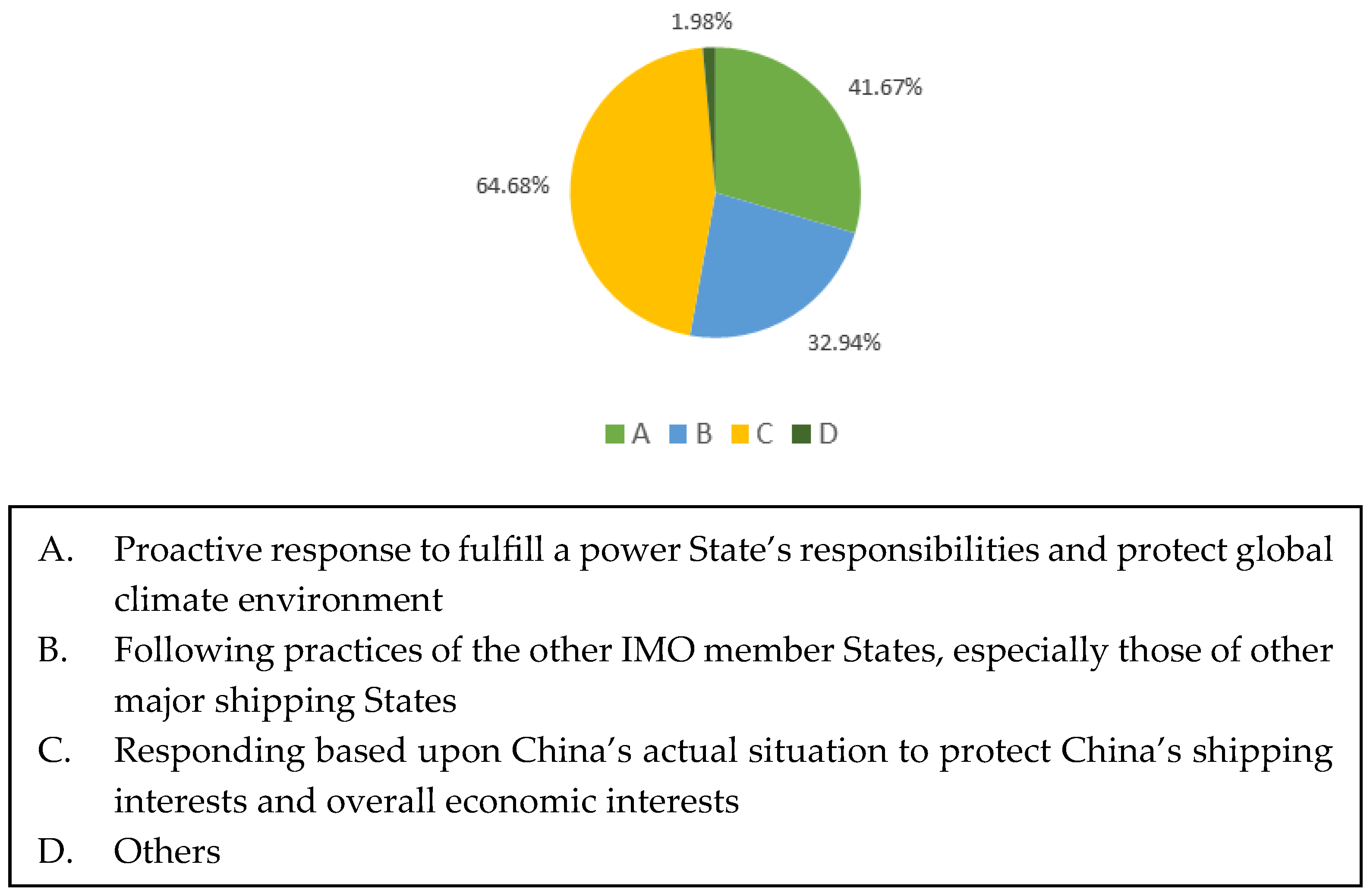
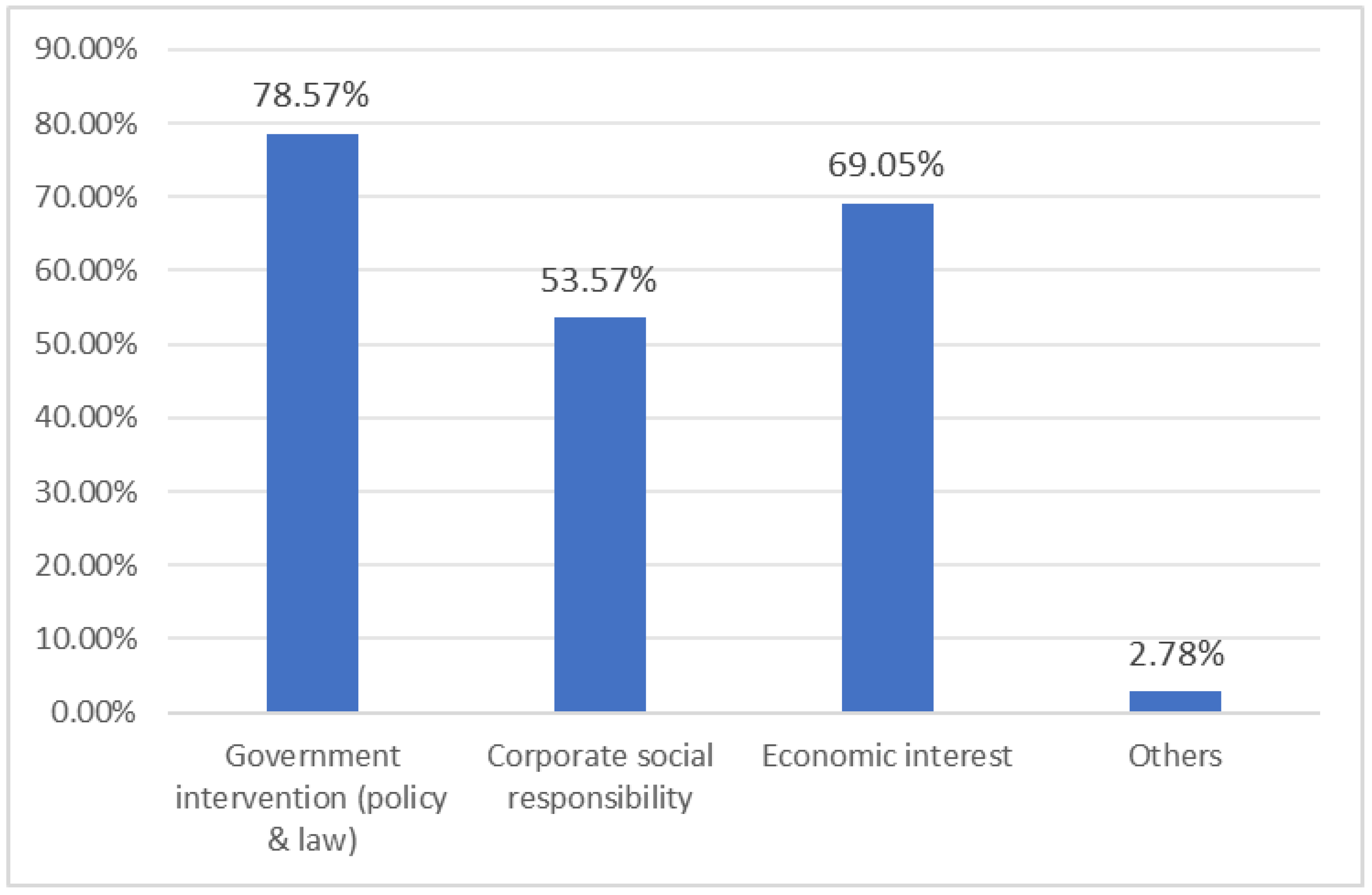


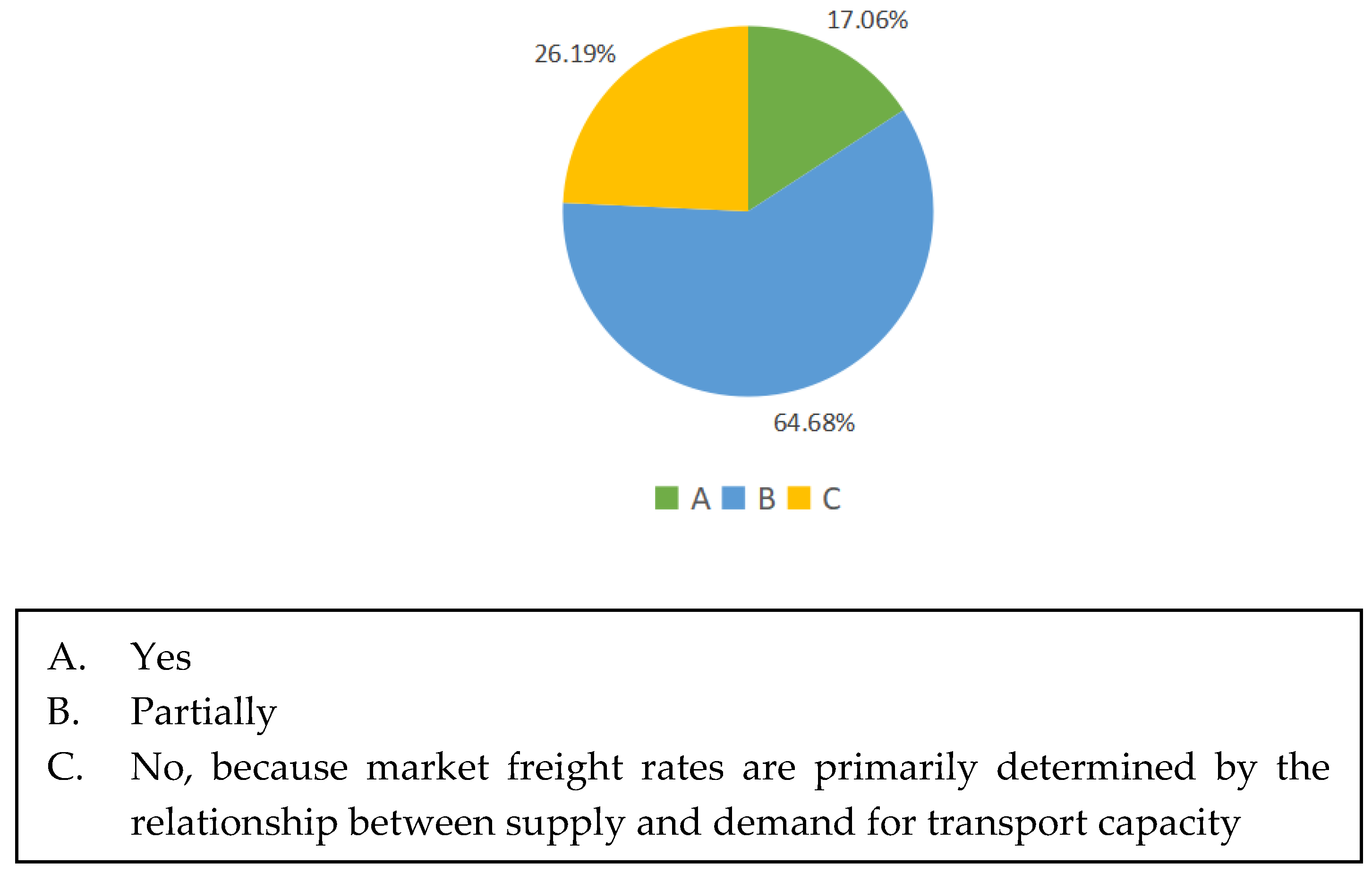
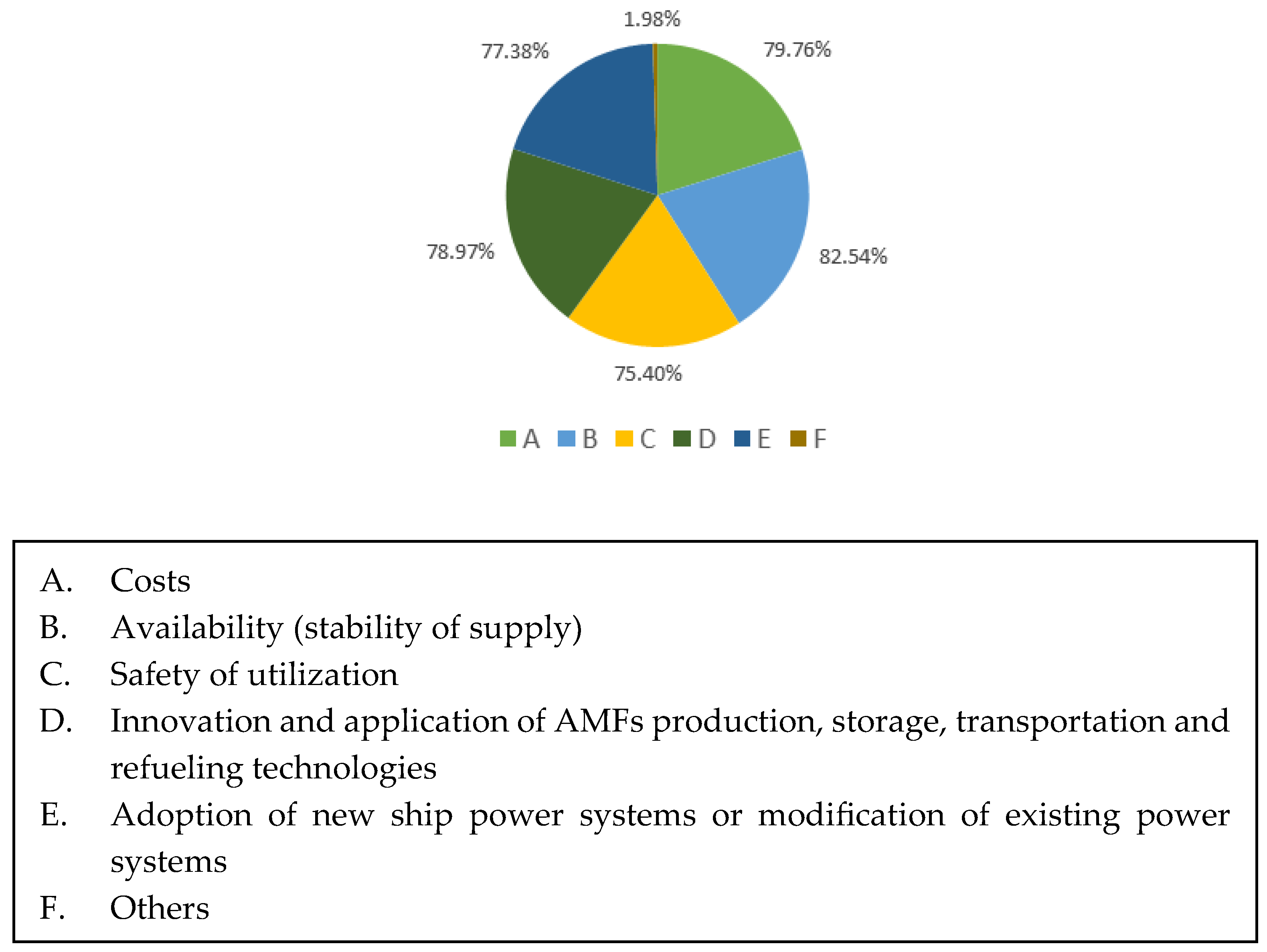
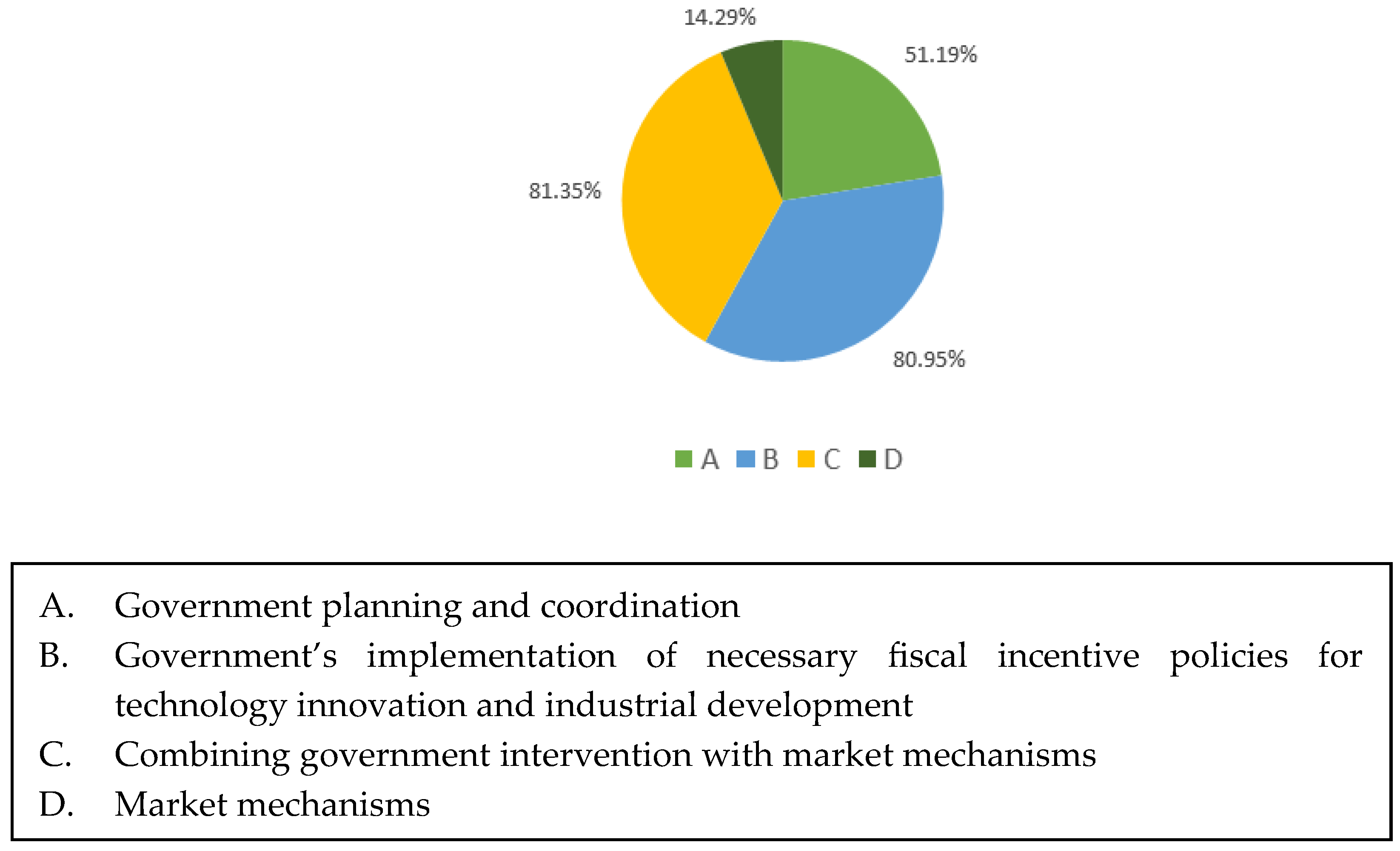



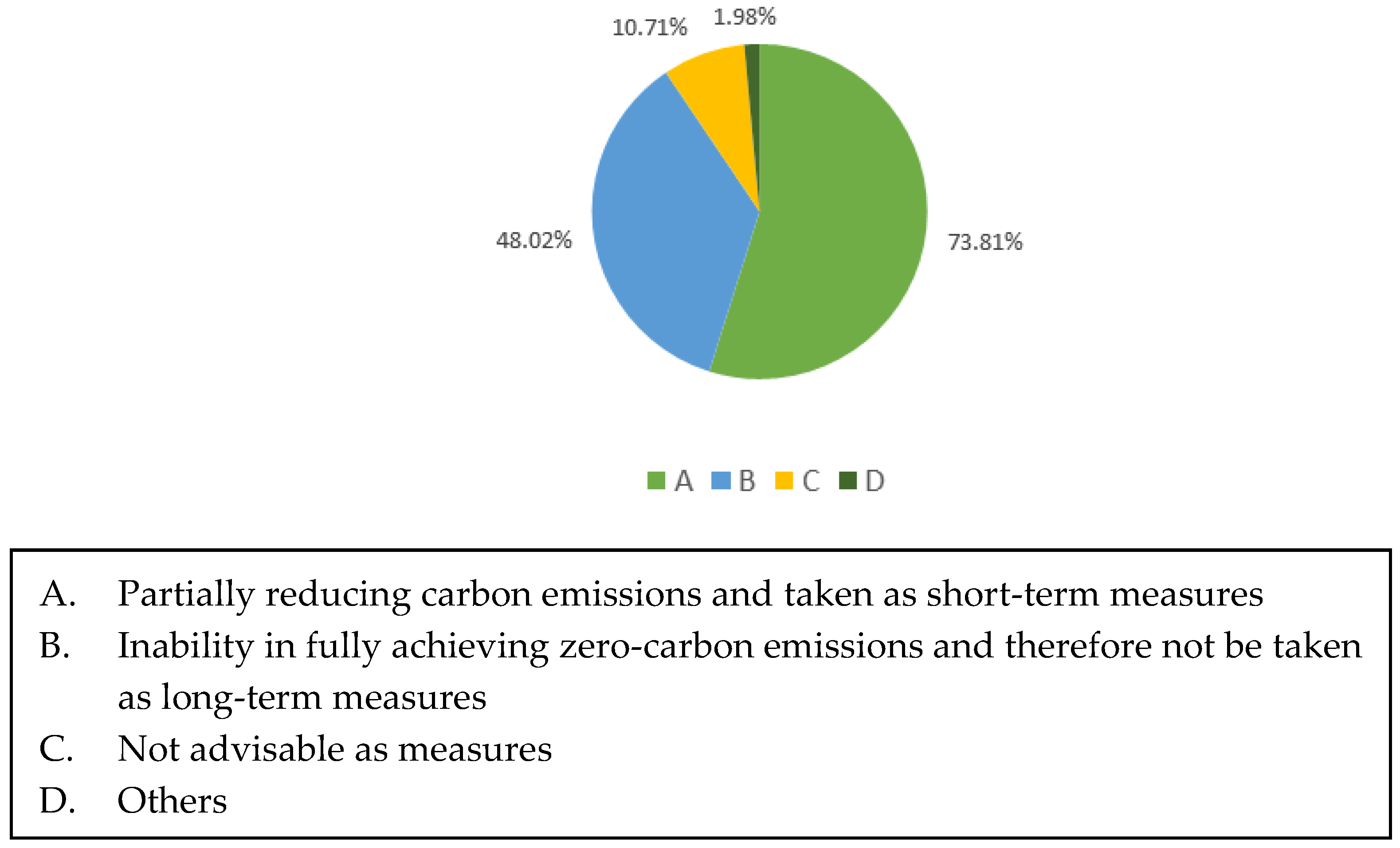
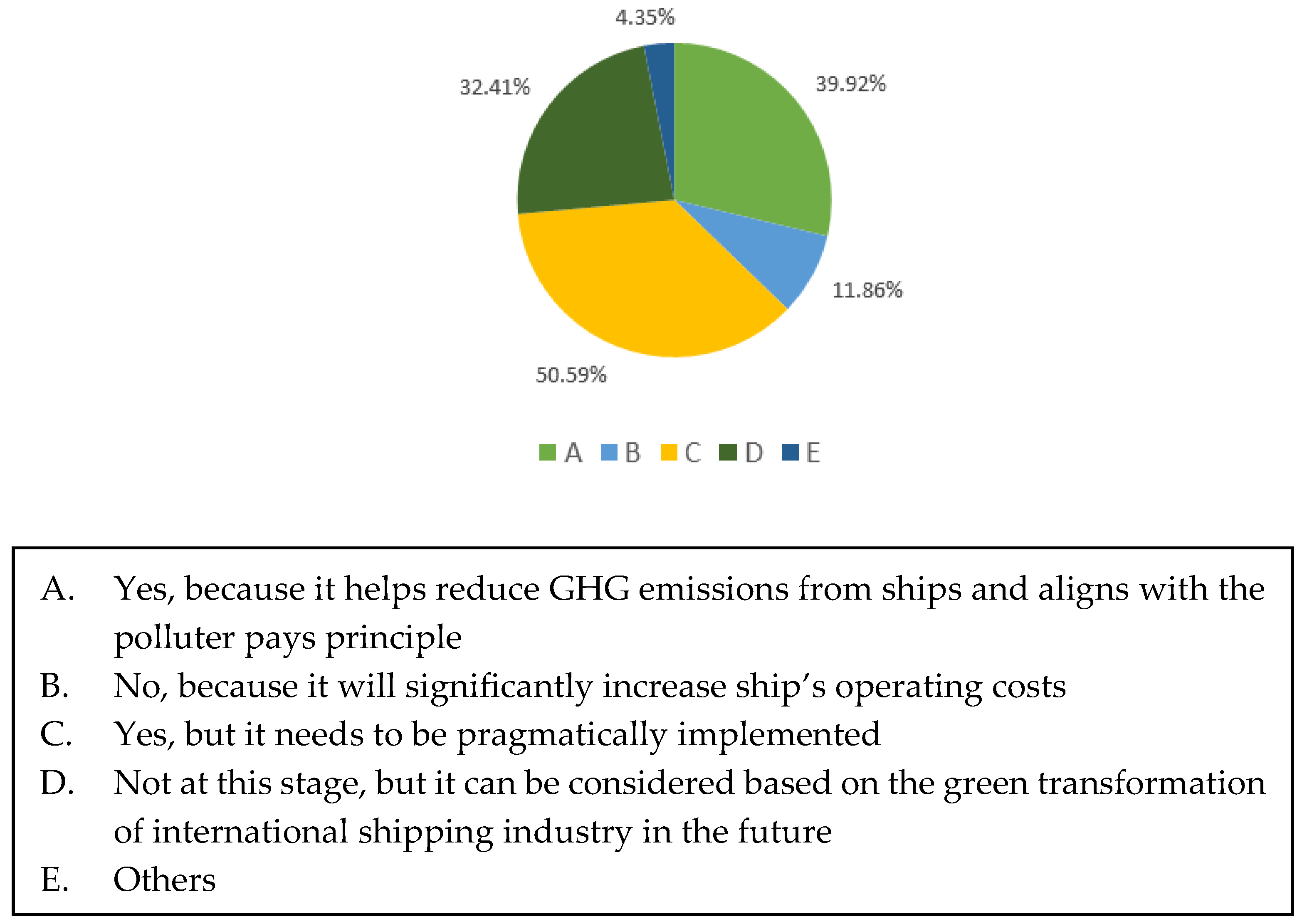
Disclaimer/Publisher’s Note: The statements, opinions and data contained in all publications are solely those of the individual author(s) and contributor(s) and not of MDPI and/or the editor(s). MDPI and/or the editor(s) disclaim responsibility for any injury to people or property resulting from any ideas, methods, instructions or products referred to in the content. |
© 2025 by the authors. Licensee MDPI, Basel, Switzerland. This article is an open access article distributed under the terms and conditions of the Creative Commons Attribution (CC BY) license (https://creativecommons.org/licenses/by/4.0/).
Share and Cite
Li, W.; Hu, Z.; Chen, X. Governmental Functions in Establishing Alternative Marine Fuel Supply Chains in Shipping Decarbonization Governance. Sustainability 2025, 17, 2808. https://doi.org/10.3390/su17072808
Li W, Hu Z, Chen X. Governmental Functions in Establishing Alternative Marine Fuel Supply Chains in Shipping Decarbonization Governance. Sustainability. 2025; 17(7):2808. https://doi.org/10.3390/su17072808
Chicago/Turabian StyleLi, Wenwen, Zhengliang Hu, and Xinqiang Chen. 2025. "Governmental Functions in Establishing Alternative Marine Fuel Supply Chains in Shipping Decarbonization Governance" Sustainability 17, no. 7: 2808. https://doi.org/10.3390/su17072808
APA StyleLi, W., Hu, Z., & Chen, X. (2025). Governmental Functions in Establishing Alternative Marine Fuel Supply Chains in Shipping Decarbonization Governance. Sustainability, 17(7), 2808. https://doi.org/10.3390/su17072808






